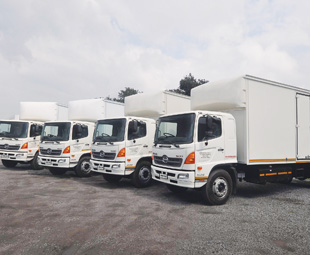More (light) heavies for local distribution?

A proposed ban on vehicles in excess of nine-tonnes from urban areas for six hours a day has the industry up in arms. With many pertinent questions to answer, we ask how (should this legislation be forced on the industry) this might affect the heavy commercial vehicle (HCV) segment of the market.
As we know, the HCV segment of the market consists of vehicles in the 8 501 to 16 500 kg gross vehicle mass (GVM) category. This means that, while the majority of the segment would be affected by the proposed ban, there is a very small part of it that falls outside of the stipulations.
This brings rise to many questions: will buyers of larger vehicles opt for those they can buy in this segment so as to avoid the ban? Will the HCV segment rise to be bigger than the medium and extra-heavy commercial vehicle (EHCV) segments? Would buyers opt for vehicles in the upper reaches of the MCV segment and would the EHCV segment dwindle?
First though, why the proposed legislation? At the recent Road Freight Association (RFA) convention (see the July edition of FOCUS for the full report) this was a topic of intense debate. With the restriction on driving hours announced in reaction to a perceived increase in carnage on the roads that involves goods vehicles, the Association’s CEO, Sharmini Naidoo, said that a lack of professionalism by some operators has cast the industry in a negative light and done a lot to damage to the already waning credibility of the transport industry.
“Comments by the Department of Transport to regulate where it sees fit are very worrying. It’s the legislator’s right to legislate and regulate, however, it must do so to achieve a legitimate purpose. The acid test should be whether the legislation serves such a legitimate purpose and whether there are means to achieve it. In many instances this is highly questionable and there is no obligation to justify the proposed legislation or to consider stakeholders concerns,” she said.
 Naturally, the proposed legislation has been severely slated for, among other things, the harm it will cause to the transport industry and the economy, while not actually addressing the root cause of the problem – a lack of enforcement and corruption.
Naturally, the proposed legislation has been severely slated for, among other things, the harm it will cause to the transport industry and the economy, while not actually addressing the root cause of the problem – a lack of enforcement and corruption.
Without wanting to have their businesses negatively impacted by virtue of losing half their daytime working hours, operators would probably need to increase their fleet size with smaller vehicles – such as the lightest HCVs or even the biggest medium commercial vehicles. This suggestion is one of the many factors that would lead to a rise in operating costs that would, ultimately, be passed onto the consumer.
How much impact could running even a smaller HCV have, though? Leslie Long, senior manager marketing and demand planning at Hino South Africa, explains that most transport applications cannot replicate the same productivity with smaller vehicles, as the consumption implications are just too great.
“If a smaller vehicle saves an operator 20 percent on his fuel bill compared to a larger vehicle, and he has to get two smaller vehicles to replace one larger one, he will see an increase of 60 percent in his fuel costs,” he explains.
(In other words: eighty percent of the original single large vehicle’s operating costs, per vehicle – 80 x 2 – equals 160 percent of the operating costs of the original single vehicle – representing 100 percent. Hence a 60 percent increase in costs.)
“We may not see an effect on the HCV market as a whole, but rather on the operating conditions of transport companies. People will not be happy to buy down and won’t be able to afford it,” Long says. “It just does not make sense for them to have to have extra vehicles running around.”
With all players in the HCV segment producing these and other vehicles locally, the legislation could have a potential implication on local vehicle production. “What if all truck operators stop buying trucks for six months because they don’t know what to do?” asks Craig Uren, COO at Isuzu Truck SA. “Our factories would be slowed down, we’d have to re-address our production runs and possibly get rid of some of our labour, which would create further unemployment.
“That’s completely against government’s fundamental aim of growing the GDP and creating employment!” he says. “Take a massive distribution centre in Midrand, Gauteng, for example, which would probably land up being shut down … it’s there in the first place because the location makes it easy to move goods around Gauteng. Trucks and buses are fundamental drivers of our economy.”
Clearly, banning large goods vehicles creates more problems than it solves – for both operators and vehicle manufacturers alike. The real question is, though, what the eventual implications might be for the South African economy? The industry can only fight the legislation through its various channels – and wait and see.
Published by
Focus on Transport
focusmagsa




